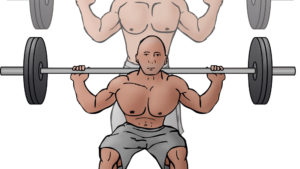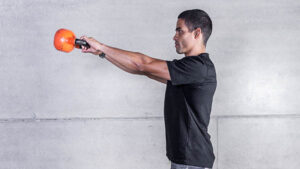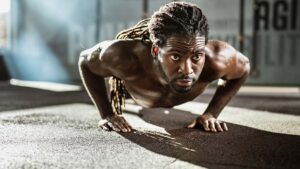
We nearly skipped leg day, but then we spoke to the guys at Maxinutrition, who reminded us of the bigger picture. A good old squat session is obviously amazing for growing huge quads, but it can also boost your core strength and drastically help burn fat.
If you want to perfect this essential exercise, take note of these tips:
1. Getting The Technique Right
As with all major lifts, to get the most out of the squat – not to mention avoid injury – you need to be confident with the movement before you hoist some serious tonnage on your shoulders.
Fortunately, the squat is one of our most basic of natural movements – if you don’t believe us, just watch a toddler retrieve something from the floor and then stand back in awe as they decide it’s rather comfy down there for the next half-hour.
Unfortunately, as we get older we tend to bend at the hips and back more, so it’s time to go back to basics.
2. Go Deep
Stand under your barbell in a squat rack. Take the bar from the rack on to your shoulders and step forward. While holding the weight, ensure your feet are pointing slightly out from your body and prepare to lower.
Keep your mind focused on lowering and your back straight. Don’t think that you are going to get your backside six inches from the ground straight away. The goal is to go as low as you can get while keeping your back straight and avoiding any other postural changes. If after a few attempts (with light weights) you cannot get all the way down, then you may need to talk to a trainer about the tension relationship of your hips and knees.
At the bottom of the squat, you need to have your knees directly over your toes, while your back should not be arched in any way. This ensures the weight is distributed evenly to your leg muscles and decreases the risk of injury.
3. Do You Need Padding?
This may sound a little zen, but to squat well you need to be at one with the bar. The padding will only create greater instability, Instead try to rest the steel snugly on your traps.
4. Squatting For Size And Strength
Once you have the correct technique sorted out, you can pack on the weights.
Your body creates muscle when you stimulate it with heavy loads and high tension. In order to do this you need to ensure that your squats have a three-second negative phase. This means lowering the weights over the course of three seconds before pausing, then powering back up. As this will be draining, high rep sets are not recommended – so make every squat count.
5. Squatting For Fat Loss
Squats utilise a hell of a lot of your body’s muscles. This is ideal for giving your metabolism a kick-start and can help you turn into a calorie-burning furnace for a few hours after your workout.
To maximise this effect, you can incorporate your squat into a superset. Squats work well when combined with compound back exercises such as pull-ups or bent-over rows.
Give yourself no more than 30 seconds rest between the end of your squats and your next exercise. The sweat should be streaming from your brow by the last few reps of the superset, but your gut will thank you when you’re done.
For more from the Maxinutrition crew, follow this link.
This move is king when it comes to core. Learn perfect form to reap maximum benefits and avoid injury.
The bounce back begins. There’s no doubt that the Covid-19 crisis curtailed fitness routines for millions, as competitions were cancelled, training programmes postponed and events put on […]



